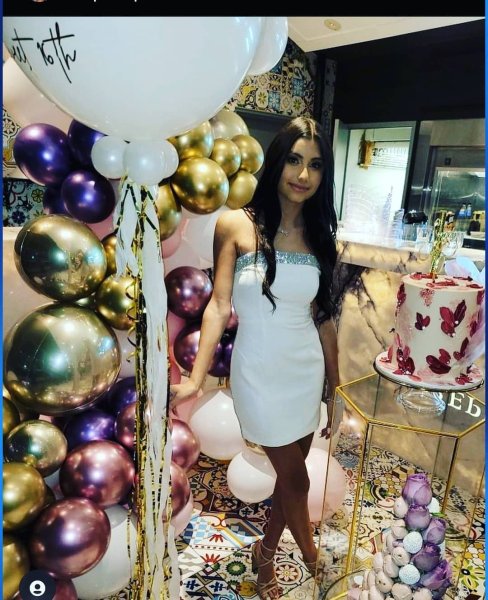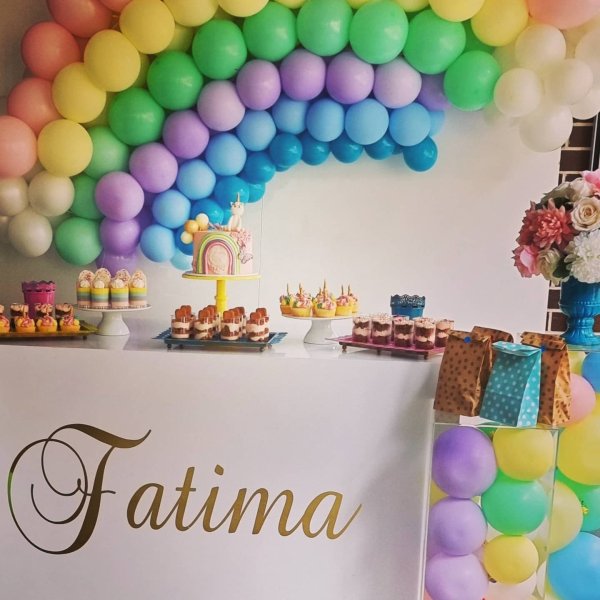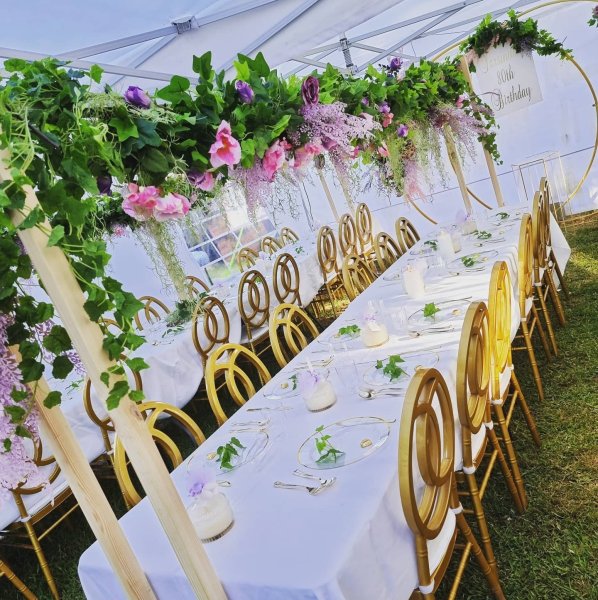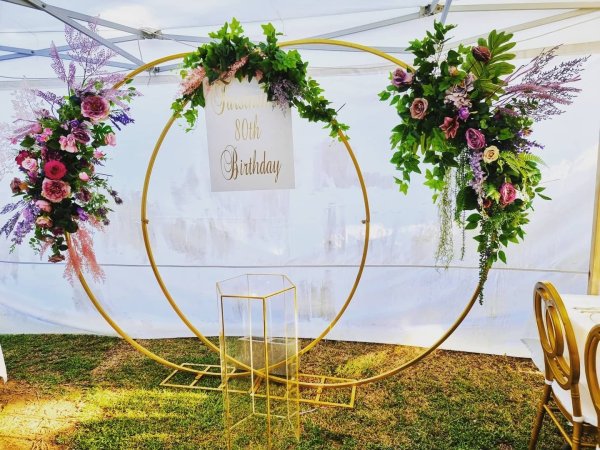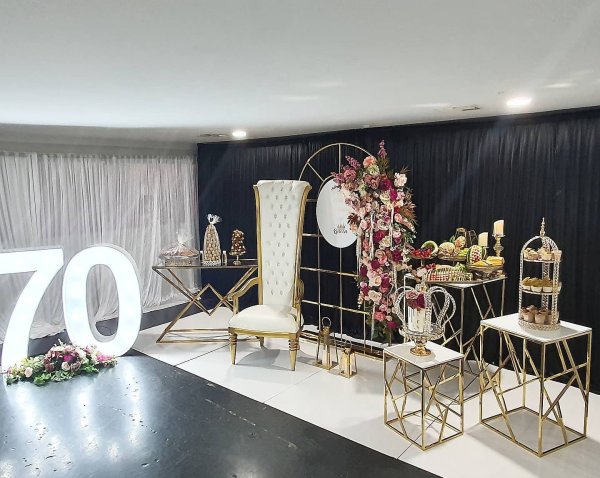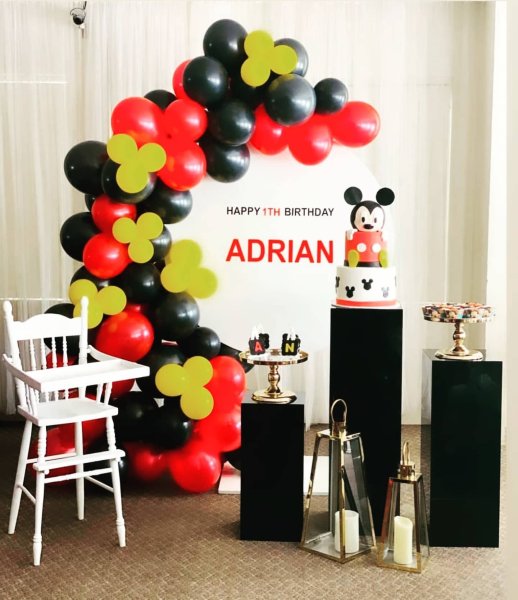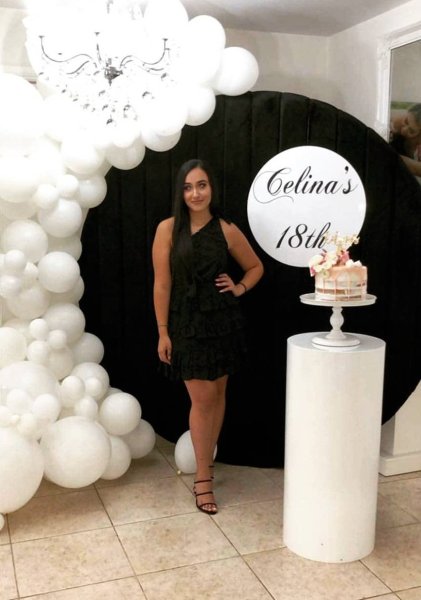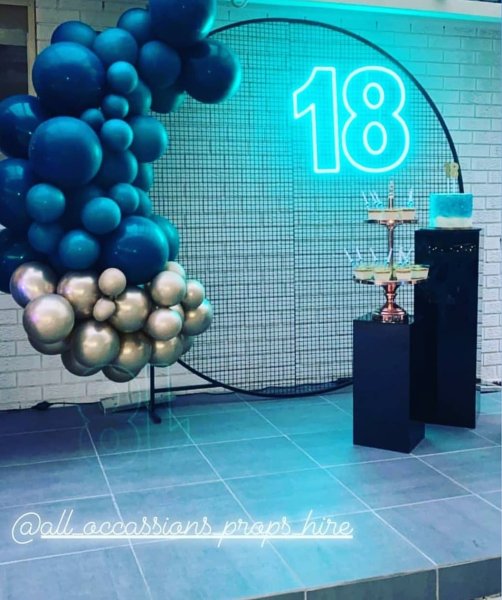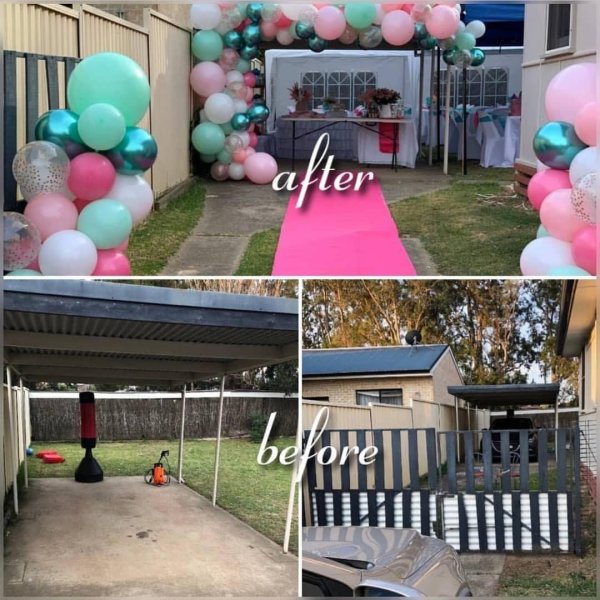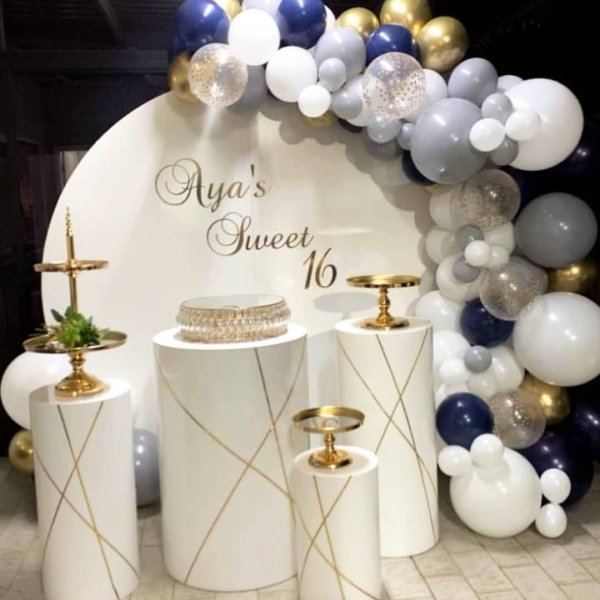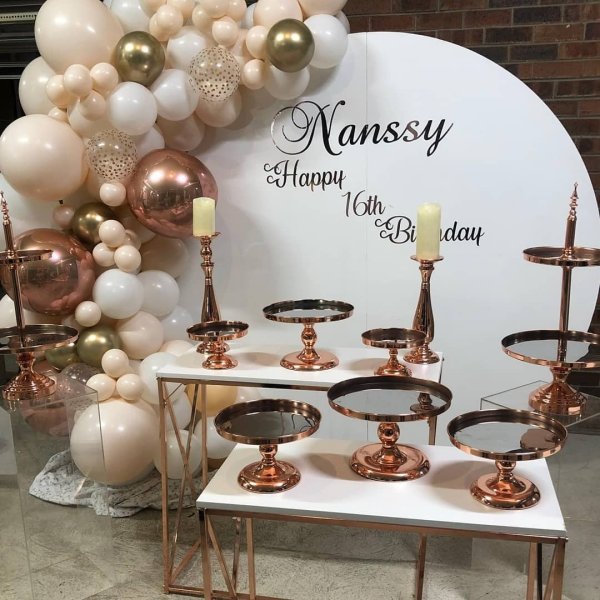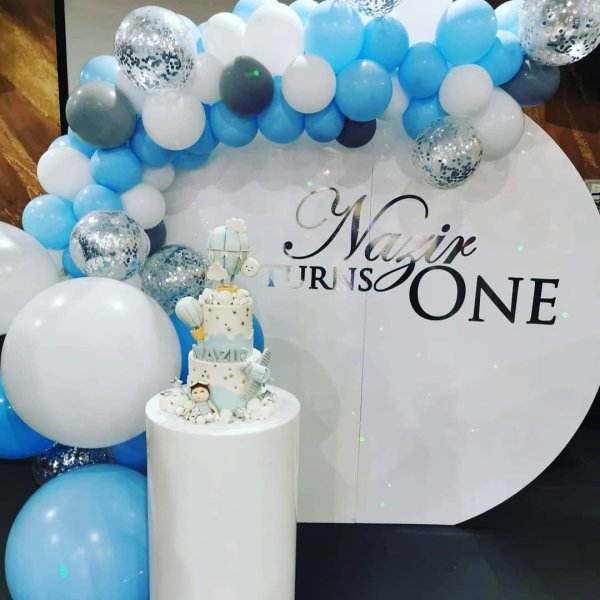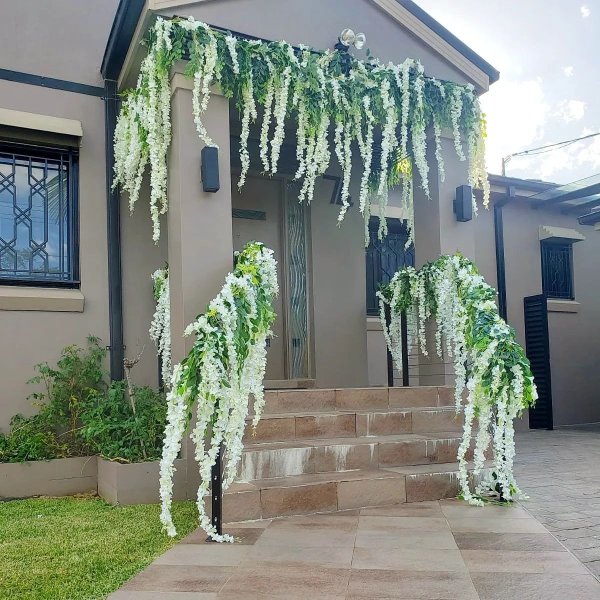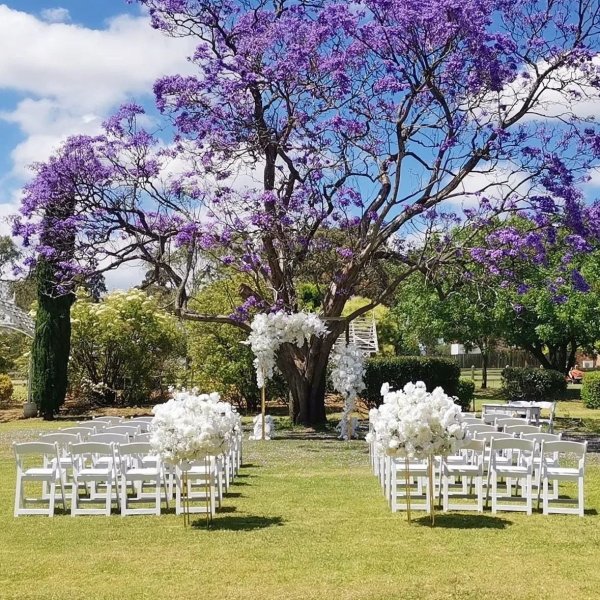-
Posts
180 -
Joined
-
Last visited
Content Type
Profiles
Blogs
Gallery
Store
Forums
Downloads
Events
Everything posted by Alloco
-

The Art of Themed Events: How to Create a Party Your Guests Will Never Forget!
Alloco posted a blog entry in Informational
In the vibrant realm of event planning and design, there's one trend that never seems to lose its charm: themed events. From whimsical fairy-tale weddings to roaring 20s corporate galas, themed events offer a unique blend of entertainment and creativity. In this blog post, we'll dive into the enchanting world of themed events, exploring why they're so popular, how to choose the perfect theme, and how to bring it to life in a way that's sure to wow your guests. Why Themed Events? Themed events are a hit for a simple reason: they're fun! They offer an escape from the ordinary, transporting guests to a different time, place, or even world. Moreover, a theme provides a cohesive thread that ties all elements of the event together, from decor and music to food and attire. Choosing the Perfect Theme The first step in planning a themed event is choosing the perfect theme. This should be something that resonates with the host and the guests. It could be inspired by a favourite film, a historical era, a travel destination, or even a colour or pattern. The key is to choose something that excites and inspires you. Bringing the Theme to Life Once you've chosen your theme, the real fun begins: bringing it to life. This involves every aspect of the event, from the venue and decor to the entertainment and catering. For instance, if you're planning a 1920s-themed event, you might choose a historic venue, jazz music, art deco decor, and a menu inspired by the era. Themed Attire: Dress to Impress One of the most exciting aspects of a themed event is the attire. Encouraging guests to dress in line with the theme can add an extra layer of fun and engagement. Whether it's flapper dresses for a 1920s event or tropical attire for a Hawaiian luau, themed attire can really set the tone and get guests into the spirit of the event. Conclusion Themed events offer a unique opportunity to unleash creativity and provide guests with an unforgettable experience. Whether you're planning a personal celebration or a corporate event, a theme can add that extra touch of magic that sets your event apart. FAQs How do I choose a theme for my event? Choose something that resonates with you and your guests. This could be inspired by a favourite film, a historical era, a travel destination, or even a colour or pattern. How can I bring my theme to life? This involves every aspect of the event, from the venue and decor to the entertainment and catering. The key is to ensure that all elements of the event align with the theme. Should guests dress in line with the theme? Encouraging guests to dress in line with the theme can add an extra layer of fun and engagement. However, it's important to make this optional and ensure guests feel comfortable. Can themed events be formal? Absolutely! A theme can be incorporated into any type of event, from a casual party to a formal gala. Where can I find inspiration for themed events? There are many resources available online, including blogs, Pinterest, and Instagram. You can also seek advice from a professional event planner. -

How to Make Your Wedding Photos Stand Out: Sydney's Top Photoshoot Locations!
Alloco posted a blog entry in Informational
Sydney, the sparkling jewel of Australia, is renowned for its iconic landmarks, stunning beaches, and vibrant cityscape. It's no wonder that it's a dream destination for couples planning their wedding photoshoots. But with so many breathtaking locations to choose from, how do you pick the perfect one? This comprehensive guide will take you on a tour of the best wedding photoshoot locations in Sydney, offering insider tips to help you capture those unforgettable moments of your special day. Sydney Opera House & Circular Quay Let's start with the classic. The Sydney Opera House and The Rocks are timeless photography locations. The iconic Opera House and Harbour Bridge serve as a magnificent backdrop, adding a touch of grandeur and elegance to your wedding photos. The black and white patterned floor at Dendy Cinemas at Circular Quay is perfect for capturing timeless aerial shots. Observatory Hill For a breathtaking view of Sydney Harbour, head to Observatory Hill. This central location offers a stunning mix of city skyline and lush greenery, providing a versatile backdrop for your wedding photos. The hill's panoramic views make it a popular choice for couples seeking a blend of urban and natural elements in their photos. Centennial Park Immerse yourself in nature at Centennial Park, a sprawling oasis in the heart of Sydney. From the white bark gumtrees of Sandstone Ridge to the long grass of Ash Paddock, Centennial Park offers a diverse range of landscapes, perfect for capturing intimate moments amidst nature. Mosman For a touch of coastal charm, consider Mosman. This location offers beautiful beaches and stunning waterfront views of the Harbour, providing a serene and romantic setting for your wedding photos. The combination of city and nature elements makes Mosman a popular choice for sunset shots. Royal Botanical Gardens Sydney Add a splash of colour to your wedding photos at the Royal Botanical Gardens. The garden's diverse flora serves as a vibrant backdrop, adding texture and depth to your photos. From pink flowers to lavender and even cacti, the Royal Botanical Garden offers a unique setting for your photoshoot. Eden Gardens For a truly unique photoshoot, consider Eden Gardens. This private garden space in Macquarie Park offers a diverse range of flora, unique sculptures, and different types of gardens, providing a unique and enchanting setting for your wedding photos. QVB (Queen Victoria Building) If you're looking for an indoor location, the QVB is a perfect choice. With its grand staircases, stained-glass windows, and towering height, the QVB offers a variety of backdrops for your wedding photos, ensuring that they are more than just walls. Martin Place For a touch of heritage and sophistication, consider Martin Place. Known as one of Sydney's business and finance centres, Martin Place is surrounded by heritage sites and buildings, providing a unique backdrop that transports you to a different time period. Hyde Park Hyde Park, Australia's oldest park, offers 16 hectares of wide-open space in the heart of the city. This well-known park is a convenient location for adding some greenery to your wedding photo collections. Watsons Bay Last but not least, Watsons Bay offers beach vibes without the sandy shoes. The docks, walkways, and the famous lighthouse can all serve as unique backdrops for your wedding photography. The serene atmosphere and stunning views make Watsons Bay a perfect location for capturing those intimate moments. Conclusion Sydney, with its diverse range of stunning locations, offers endless possibilities for your wedding photoshoot. Whether you're drawn to the grandeur of the city's iconic landmarks, the serene beauty of its parks and gardens, or the romantic charm of its coastal areas, Sydney has the perfect location for you. So, get ready to capture the magic of your special day against the backdrop of Sydney's most stunning locations. FAQs What are some iconic locations for a wedding photoshoot in Sydney? The Sydney Opera House, Circular Quay, and The Rocks are some of the most iconic locations for a wedding photoshoot in Sydney. Where can I have a nature-themed wedding photoshoot in Sydney? Centennial Park, the Royal Botanical Gardens, and Eden Gardens are excellent locations for a nature-themed wedding photoshoot in Sydney. Can I have a beach-themed wedding photoshoot in Sydney? Yes, Watsons Bay and Mosman are perfect locations for a beach-themed wedding photoshoot in Sydney. What is the best time for a wedding photoshoot in Sydney? The golden hour, which is the last two hours of sunlight, is generally considered the best time for a wedding photoshoot as it offers the best lighting conditions. How can I make my wedding photoshoot unique? Choosing a location that resonates with you and your partner, incorporating personal elements, and working with a professional photographer can make your wedding photoshoot unique.-
- eden gardens
- mosman
- (and 4 more)
-

The Role of Colour Theory in Floral Design: A Game-Changer in Event Planning
Alloco posted a blog entry in Informational
As an event planner, you're no stranger to the power of aesthetics. From the venue to the décor, every element plays a crucial role in setting the mood and creating a memorable experience. But have you ever considered the role of colour theory in floral design? It's a game-changer, and here's why. Understanding the Floral Colour Wheel A colour wheel is a fundamental tool in colour theory. It's a circular diagram of colours arranged by their chromatic relationship. Primary colours - red, yellow, and blue - are the three main parts of the colour wheel. These are the only colours that aren't made from a mixture of other colours. Secondary colours are blends of any two primary colours. For example, orange is a mix of red and yellow, green is a mix of yellow and blue, and purple is a mix of blue and red. Tertiary colours are blends of any primary colour with any secondary colour. Red-orange, yellow-orange, red-violet, blue-violet (indigo), and blue-green (teal) are good examples of this. Colour Styles in Floral Design There are several ways to combine colours in floral design to create harmonious arrangements. Here are four basic colour harmonies that every event planner should know: Complementary: These are pairs of colours right across from each other on the colour wheel, such as red and green, yellow and violet, and blue and orange. They create an intriguing palette given their clear contrast to each other. This is best for forming intense or vibrant floral arrangements. Analogous: These schemes consist of three colours beside each other on the wheel. It includes the two most popular divisions of colours: warm (red, orange, and yellow) and cool (blue, green, and purple). Florists match these colour harmonies to different themes! Whether for solemn moods or thrilling motifs, they blend well to develop a flowing look. Monochromatic: On a strict budget? These arrangements are easy on the pocket but pleasing to the eye! Simple yet stylish, they suit any theme or occasion with ease. Known as "greenery", they add the beauty of nature's touch to any arrangement. Triadic: This scheme uses three colours at equal distances from each other on the colour wheel. In floral arrangements, this appears in groups of the primaries and secondaries. Florists often select subtler or lighter shades of the triad. They also go for a mix of deep and soft shades for a pleasing, balanced aesthetic. Conclusion As an event planner, understanding the role of colour theory in floral design can significantly enhance your events. It's not just about creating beautiful arrangements; it's about evoking emotions, setting the mood, and telling a story. So, the next time you're planning an event, consider the power of colour theory in your floral design. It could be the game-changer you've been looking for. FAQs What is the role of colour theory in floral design? Colour theory plays a crucial role in floral design. It helps create harmonious arrangements that can evoke emotions, set the mood, and enhance the overall aesthetic of an event. What are the primary colours in the floral colour wheel? The primary colours in the floral colour wheel are red, yellow, and blue. These colours are not made from a mixture of other colours. What are complementary colours in floral design? Complementary colours are pairs of colours right across from each other on the colour wheel. Examples include red and green, yellow and violet, and blue and orange. They create an intriguing palette given their clear contrast to each other. What are analogous colours in floral design? Analogous colours consist of three colours beside each other on the wheel. It includes the two most popular divisions of colours: warm (red, orange, and yellow) and cool (blue, green, and purple). What are monochromatic arrangements in floral design? Monochromatic arrangements use different shades, tints, and tones within a specific colour range. They are simple yet stylish and suit any theme or occasion with ease.-
- triadiccolours
- monochromaticarrangements
- (and 7 more)
-
Flowers, with their vibrant colours and intoxicating fragrances, have a unique way of brightening up any event. But did you know that creating your own flower bouquets can be just as enjoyable as admiring them? In this blog post, we'll guide you through the process of arranging flowers like a pro, adding a personal touch to your events. So, let's dive in and let your creativity bloom! Essential Tools and Supplies for Crafting Your Own Stunning Flower Bouquets Flowers: Choose a variety of flowers in different colours, sizes, and shapes. You'll need some larger, focal flowers as well as smaller, filler flowers. Greenery: This will form the base of your bouquet and add a nice contrast to the flowers. Vessel: This could be a traditional vase, a woven basket, or any other container that suits the style of your arrangement. Floral Scissors or Pruners: These will be used to cut the stems of the flowers. Make sure they're sharp to ensure clean cuts. Floral Tape: This can be used to secure your bouquet, especially if you're creating a hand-tied one. Floral Foam: If you're using a vessel like a basket, floral foam can be very helpful to keep your flowers in place. Water: To keep your flowers fresh, you'll need to add water to your vessel. Floral Food: This is optional, but it can help extend the lifespan of your flowers. Ribbon or Twine: This can be used to wrap around the stems of a hand-tied bouquet, adding a decorative touch. Gloves: Some people find it helpful to wear gloves when handling flowers and greenery, especially if they have sensitive skin Step 1: Deciding on a Flower Arrangement Design The first step in creating a stunning flower bouquet is deciding on a design. Consider the event's theme, the season, and your personal preferences. Remember, variety is the spice of life. Mixing flowers with different colours, sizes, shapes, and textures can result in truly captivating arrangements. Step 2: Cutting and Preparing Flowers Once you've chosen your flowers, it's time to prepare them. This involves removing extra leaves and damaged petals, and making a fresh diagonal cut at the bottom of the stems. This not only enhances the bouquet's appearance but also helps the flowers absorb water and nutrients, extending their lifespan. Step 3: Choosing a Vessel The vessel you choose for your arrangement can greatly influence its overall look. From traditional vases to woven baskets, the options are endless. Consider the type of flowers you're using and the style of the event when making your choice. Step 4: Arranging the Flowers Now comes the fun part - arranging the flowers! Start with a base of greenery, then add your focal flowers. These are usually the largest blooms or those with an unusual colour or texture. Finally, add smaller flowers and textural elements to fill around the focal flowers. Remember, the goal is to create a balanced, visually pleasing arrangement. Conclusion Creating your own flower bouquets can be a rewarding experience, adding a personal touch to your events. Not only does it allow you to express your creativity, but it also enhances the aesthetic appeal of any space. So why not give it a try? With the right tools and a bit of practice, you'll be arranging flowers like a pro in no time! FAQs What types of flowers are best for bouquets? There's no definitive answer to this as it largely depends on the theme of your event and personal preferences. However, roses, lilies, tulips, and sunflowers are popular choices due to their beauty and versatility. How can I make my flower bouquet last longer? To extend the lifespan of your bouquet, make sure to cut the stems diagonally, remove any leaves that would be submerged in water, and change the water regularly. Can I use different types of flowers in one bouquet? Absolutely! Mixing different types of flowers can result in truly unique and captivating arrangements. How do I choose a vessel for my flower arrangement? Consider the type of flowers you're using and the style of the event. The vessel should complement the flowers and fit well with the overall decor. Can I create a flower bouquet even if I don't have any experience? Yes, you can! With a bit of practice and the right tools, anyone can create beautiful flower bouquets. Just remember to have fun and let your creativity shine!
-

From Reel to Real: Çağrı Şensoy and Buse Arsslan's Dreamy Wedding!
Alloco posted a blog entry in Celebrity Weddings
In the world of glitz and glamour, love stories are often as dramatic as the roles these stars portray on screen. One such enchanting tale is that of Çağrı Şensoy and Buse Arsslan, two stars who fell in love on the sets of the Turkish drama 'Kuruluş: Osman'. Their journey from reel life to real life has been nothing short of a fairytale, culminating in a beautiful wedding that was the talk of the town. The Love Story Çağrı Şensoy and Buse Arsslan's love story is a testament to the power of love and destiny. Their chemistry on the sets of 'Kuruluş: Osman' was undeniable, and it wasn't long before their on-screen romance blossomed into real-life love. Their relationship, nurtured by shared experiences and mutual respect, soon became the talk of the town, captivating fans worldwide. The Wedding Ceremony On July 8, 2023, the couple decided to embark on a new journey together. The wedding ceremony, held in the picturesque locale of Bolu, Turkey, was an intimate affair attended by close relatives and friends. The couple chose to say their vows in a country wedding, a perfect blend of tradition and modernity, reflecting their unique personalities and love for each other. The Grand Reception The reception was a grand spectacle, with the who's who of the Turkish film industry in attendance. The highlight of the event was the famous actor Burak Özçivit, a close friend of the couple, who was seen dancing along with the newlyweds. The joyous atmosphere, the laughter, and the unforgettable moments made it a night to remember. Conclusion The wedding of Çağrı Şensoy and Buse Arsslan was a beautiful celebration of love and commitment. As they embark on this new chapter in their lives, we wish them a lifetime of happiness and love. Their love story, from reel life to real life, serves as an inspiration to many, proving that sometimes, fairytales do come true. FAQs Who is Çağrı Şensoy? Çağrı Şensoy is a renowned Turkish actor, best known for his role in the drama 'Kuruluş: Osman'. Who is Buse Arsslan? Buse Arsslan is a famous Turkish actress who starred alongside Çağrı Şensoy in 'Kuruluş: Osman'. When and where did Çağrı Şensoy and Buse Arsslan get married? The couple tied the knot on July 8, 2023, in a beautiful country wedding held in Bolu, Turkey. Who were the famous guests at the wedding? The wedding was attended by many famous personalities, including the renowned actor Burak Özçivit. What is the couple's connection with the drama 'Kuruluş: Osman'? Çağrı Şensoy and Buse Arsslan both starred in the Turkish drama 'Kuruluş: Osman', where they fell in love both on and off-screen.-
- çağrı şensoy
- kurulus osman
-
(and 2 more)
Tagged with:
.png.b7bb8e84ef01ae4c22fefaf199c9e722.png)

